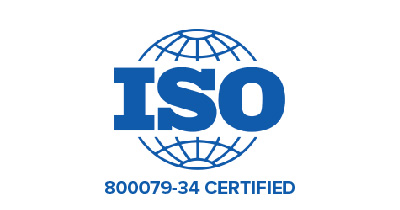A prominent visionary once stated, ‘necessity is the mother of invention’. Perhaps this adage can be applied to how RFID technology came into being as well. During World War II, there was a need to identify aircraft to differentiate whether it was friendly or not, which led to the development of a “Transponder” that was placed on the aircraft so that it could be identified on the ground. Work carried on to refine the technology, and it wasn’t until the 1970’s when the term “RFID” was coined and systems began to emerge for useful application of the concepts for commercial use. Since then, RFID technology has evolved significantly, with “active” RFID being introduced to the mix, adding a new dimension to the RFID ecosystem, which previously consisted of only “passive” RFID technology. Each of these has its own merits, and therefore suitable for its own array of applications. Active RFID is more commonly associated with Real Time Location Systems (RTLS), which is changing the way businesses work, and deliver services.
Healthcare has been one of the leading employers of RFID technology along with the Military, and is primarily utilized for automatic identification of equipment and personnel, for security as well as tracking purposes. The growth in adoption of the technology is projected to be exponential in the next few years by industry experts. Healthcare facilities benefit greatly by employing RFID to track assets, manage inventory, improve patient & staff safety & security, and to enhance their workflows.
Whether it is a large hospital or a mid size clinic, delivering the best quality of patient care and ensuring the finest medical practices is critical in order to instil confidence in patients and in their family and friends. It is said that word-of-mouth referrals work more for healthcare than for any other industry. People obviously want the best healthcare available, and health is one of the major topics of discussion whether it is at the dinner table or at the office water cooler.
A facility’s staff has the highest influence in being able to provide the best quality of care to patients. Without having the equipment and materials required to provide that care at their immediate disposal, or having to spend their precious time searching for the right equipment impedes the quality of care. Active RFID is a powerful tool that assists in the management of assets by tracking them, offering immediate location of needed equipment on demand, and assisting in planning, maintenance and utilization of the equipment. All of these greatly enhance the ability of staff to spend more time providing care. At the same time it provides the facility important data helping to save costs by enhancing productivity minimizing losses and improving asset utilization rates. Equipment loss is a major issue within healthcare facilities, whether it is due to theft or being misplaced, resulting in higher capital expenditures than actually needed. In addition, most facilities augment their equipment inventory by renting or leasing more in order to cover for peak usage times or simply because their own assets cannot be located. Maintaining accurate records of all assets within a facility is vital to following proper auditing practices, and facilities cannot accurately report capital assets currently owned if they cannot actually find them. Utilizing an Active RFID based real-time tracking system resolves most of these issues.
GuardRFID has developed an Active Hospital RFID solution that not only provides the ability to track and locate assets in real-time using tags placed on people and assets and communicating with them using long-range wireless links, but also monitor their movements and secure them at portals using a unique secondary close proximity detection method. The system, known as AllGuard, also offers room and bed level location capabilities for equipment, staff and personnel. Besides enabling asset tracking and security, the same system can be used for wandering patient protection, infant security, and staff duress, significantly enhancing the facility’s return on investment. AllGuard is fully IP-based and in full compliance with today’s corporate IT policies. It does not encroach upon or overload the hospital’s Wi-Fi network, or interfere with any other systems due to the use of a globally accepted frequency band which is the most optimal for these kinds of systems. AllGuard is highly-scalable, and can be implemented as a stand-alone system within a single facility, or be used to monitor multiple geographically disparate locations by utilizing its Enterprise version Server software. In addition to workstation based clients for user interactions, AllGuard also has mobile clients which allow users to securely connect to their system to monitor tag events and locations while on the move, using either Wi-Fi networks or cellular data connections.
AllGuard is a perfect example of the ‘Internet of things’ ecosystem, with the tags being used to remotely identify, monitor and control people or objects that they are placed upon, by utilizing special software applications and the Internet as the medium for end to end connectivity.
Visit us at booth #4579 at #HIMSS19 to find out how we can help your organization.

